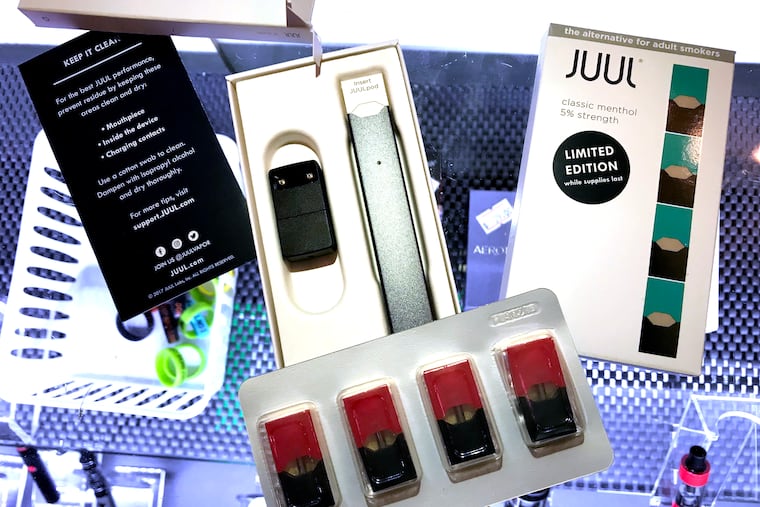National report finds dramatic increase in teen vaping
There has been an increase of about 1.3 million teens who vape in 2018.

The number of U.S. adolescents who have used electronic cigarettes in the last year has taken a sharp turn upward, according to a report published Monday in the New England Journal of Medicine.
From 2017 to 2018, there has been a 10 percent increase in 12th graders who reported vaping, a 7.9 percent increase in 10th graders, and a 2.6 percent increase in eighth graders. The increase translates to about 1.3 million additional adolescents who vaped in 2018.
The new data came from Monitoring the Future, an annual national survey of more than 13,000 students. The increases of reported vaping among 10th and 12th graders are the largest ever recorded by the 44-year-old national survey.
The data shows that the public policies already in place to halt the increased use of electronic cigarettes are ineffective, the report stated.
The group surveyed students on vaping and six other common forms of tobacco use.
The use of nicotine products increased by 5.2 percent overall from 23.7 percent to 28.9 percent in the sample of 12th graders, driven solely by nicotine vaping. The use of the six other nicotine products declined slightly in the year-over-year study.
More than 3.6 million middle and high school students were already using e-cigarettes, according to the 2018 National Youth Tobacco Survey. In 2011, there was a near-zero prevalence of vaping.
“While we haven’t seen the report yet, we are extremely concerned about the recent increase in teen use of electronic cigarettes,” said Cheryl Bettigole, director of chronic disease prevention for the Philadelphia Department of Public Health. “It has become increasingly clear in recent years that e-cigarettes are dangerous to teens, and that e-cig use appears to make it more likely that a teen will go on to smoke combustible cigarettes.”
The department is working with the School District of Philadelphia, as well as area charter schools, colleges, and universities in an effort to inform students about the high nicotine content and addictive potential of Juul, a popular e-cigarette manufacturer. They are also planning an anti-vaping social media campaign, Bettigole said.
In the last year, the U.S. Food and Drug Administration has stepped up enforcement against the manufacturers of the devices — especially those that offer flavored products — in an effort to curb use by teens who have been drawn to the sleek-looking products.
Last month, the agency imposed sharp restrictions on where flavored e-cigarette products could be sold, and announced plans to ban flavored cigars and menthol cigarettes. It also required websites that sell e-cigarettes to use stricter methods to verify buyers' ages.
The move prompted Juul Labs, which accounts for nearly 70 percent of e-cigarette sales, to stop selling most of its flavored products in retail stores and pull back on its social-media promotion. Altria, another manufacturer, also announced it would stop selling its pod-based flavored e-cigarettes.
In September the agency launched a $60 million anti-vaping ad campaign called “The Real Cost.” The campaign is aimed at the 10.7 million kids, ages 12 to 17, who have used or are willing to try e-cigarettes.
The vaping products are also a budding hazardous waste and environmental problem.
Unlike traditional cigarettes, which are made of paper, tobacco, and a filter, e-cigarettes have five components — residual nicotine, plastic, lithium batteries, aluminum, and fabric — each of which has to be disassembled and recycled separately, something that most jurisdictions are not currently doing.
Juul alone is estimated to produce about 20 million pods per month, some of which are now showing up on streets and beaches.